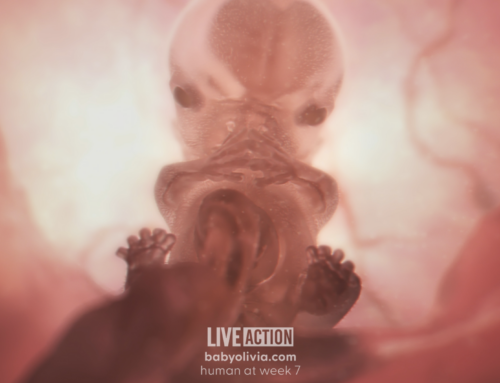 Were it not for a police investigation into illegal drug trafficking, Kermit Gosnell might still be murdering babies.
Were it not for a police investigation into illegal drug trafficking, Kermit Gosnell might still be murdering babies.
The Pennsylvania Department of Health turned a blind eye to complaints about his inner city clinic in Philadelphia. Officials in the legal system put political concerns above justice. The mainstream media was nowhere to be found.
The truth was so sordid that it was natural fodder for an adapted screenplay. Gosnell: The Trial of America’s Biggest Serial Killer, opens in theatres on Oct. 12.
The crowdfunded film is the dramatization of the bestseller written by investigative journalists Ann McElhinney and Phelim McAleer about the now-incarcerated former abortionist convicted in 2013 of the first degree murders of three babies and the manslaughter of a woman whose child he aborted.
Gosnell’s real victim count is likely in the thousands.
The movie unfolds like an episode of Law & Order, with Gosnell’s 2011 arrest coming at roughly the midpoint. The first half chronicles the investigation by the FBI, Drug Enforcement Agency, and Philadelphia police department into his crimes, while the second half focuses almost entirely on his trial.
To condense a years-long saga into a 90-minute script, McAleer and McElhinney worked with screenwriter Andrew Klavan to craft composite scenes based on first-hand interviews and court documents.
Dean Cain, who played Superman in the 1990s show Lois & Clark, portrays a real life hero, Detective James “Woody” Woods, the undercover drug cop who, while investigating Gosnell for prescription drug trafficking, stumbled upon the true nature of the Philadelphia clinic aptly described as a “House of Horrors.”
As the titular character, actor Earl Billings brilliantly captures Gosnell’s charming and cavalier demeanor, his indifference as disturbing as his penchant for butchering children. Even today, the real Gosnell insists he did nothing wrong, framing himself as a victim of a politically motivated witch hunt. He thinks he’s the hero, rather than the villain of his story.
Had he worked in any other field of medicine, he would have been stopped years earlier.
In Gosnell, Woods and Assistant District Attorney Alexis McGuire (based on prosecutor Christine Wechsler) are told by colleagues, the district attorney, and a grand jury judge that the Gosnell case is not and cannot be about abortion.
During the trial, an abortionist testifies that Gosnell’s brutal practice doesn’t represent the real work of abortionists. That scene, featuring the fictional Dr. North, lasts just shy of five minutes, which, in cinema, is an eternity.
Her cross-examination by Gosnell’s lawyer, played by the film’s director, Nick Searcy, was a pivotal moment. It revealed how despite the establishment’s claims, abortion itself was also on trial.
Part of Gosnell’s defense in the film and the real trial was that what he did to babies wasn’t all that different from what you’d find at any abortion clinic. For all the contrast the supposedly reputable abortionist tried to draw between her work and Gosnell’s, she conceded that even in what she views as a proper abortion facility, using scissors to “snip” the back of a baby’s neck is considered an acceptable, albeit atypical, practice. As is letting a baby die after an unintentional live birth, she said.
There was a turning point in the dramatized trial when McGuire showed a photo of the murdered infant known as Baby Boy A to the jury and the courtroom.
The viewers don’t see the photo as the camera focuses instead on the reactions of those who do. As the shot pans, prosecutors, jurors and spectators are overcome with sadness and horror as they see evidence that makes it hard to differentiate a fetus from a child.
It was one of the moments in the film when the unseen was more powerful than the seen. There is no subtlety in Gosnell. The movie bluntly shows how government turned a blind eye to evil because the politics of abortion prevented anyone from confronting the brutality of abortion.
One needn’t be pro-life to be horrified by Gosnell’s crimes. However, in Gosnellviewers must look beyond a monster’s actions into a system that allowed them to go unchecked for so long. Such is the byproduct of a culture that values a romanticized ideal of abortion above uncomfortable truths.
Despite the name, Gosnellisn’t the story of a murderer. It’s a story of a police officer who witnessed evil and couldn’t look away. Now, it’s the audience’s turn to do the same.




